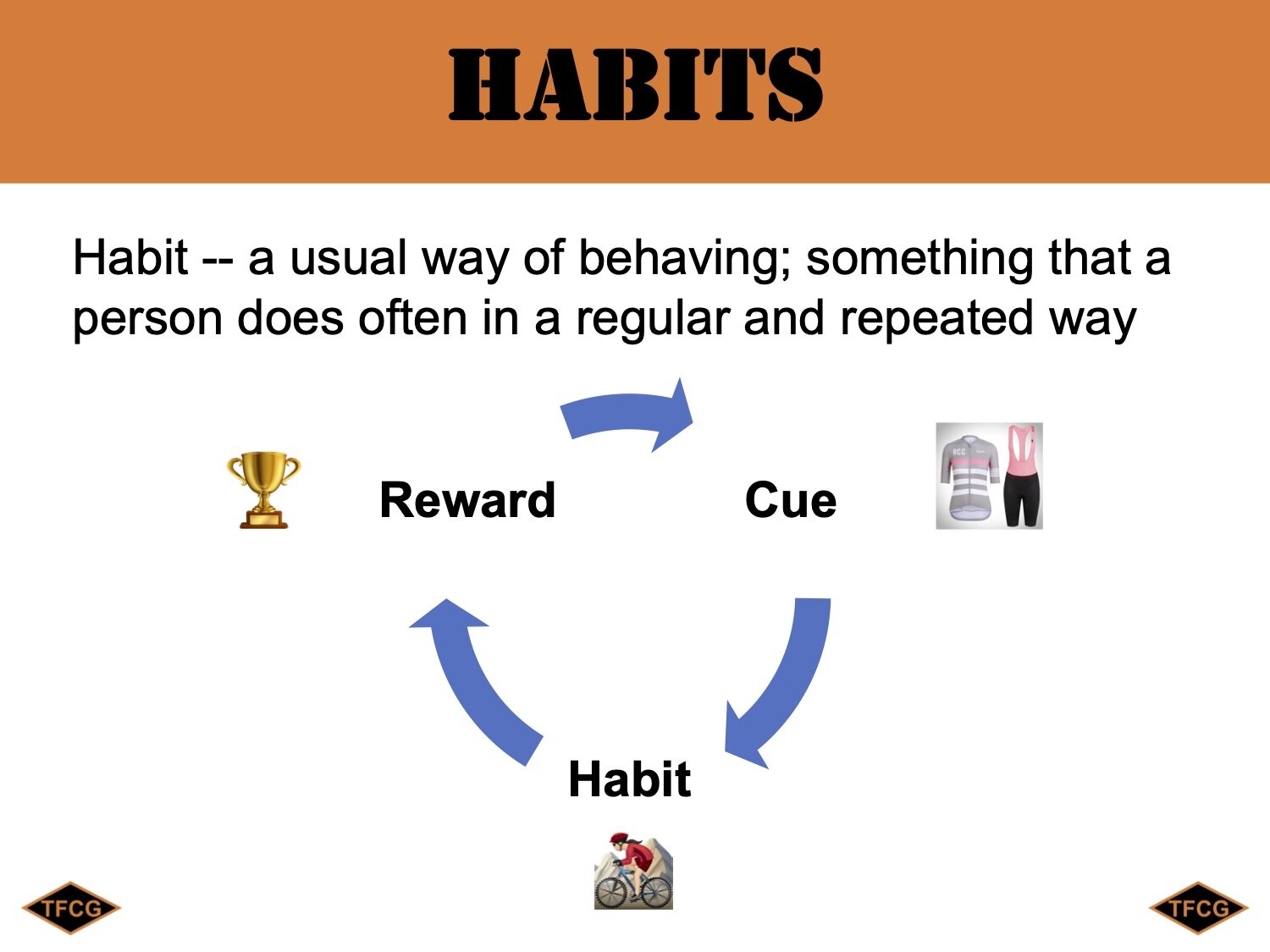Grit 2.0 -- Bad Habits (#227)
My bad habits lead to late nights endin’ alone / Conversations with a stranger I barely know
Swearin’ this will be the last, but it probably won’t / I got nothin’ left to lose, or use, or do
Ed Sheeran, Bad Habits, 2021
Last summer, Ed Sheeran, the English singer-songwriter, sang about the power of bad habits to lead you astray. The song struck a chord with people — hitting #1 in the UK and #2 in the US. Like Ed, I am a big believer in the power of habits and their ability for the habit to help or hinder you from reaching your goals. Habits are a significant part of developing your grit. But how do you develop a good habit, or like Ed, get rid of a bad one?
Bad Habits by Ed Sheeran
Three Step Habit Cycle
A habit is defined as “a usual way of behaving; something that a person does often in a regular and repeated way.” I have read both James Clear’s Atomic Habits and Charles Duhigg’s The Power of Habit. I liked both books, but I think that Duhigg’s book is slightly better Duhigg believes that habits are a three-step process of cue, habit, and reward. Clear, on the other hand believes it is a four step process — cue, craving, response, and reward. I think Clear’s model is a little cumbersome.
Let’s take a look at the three step habit cycle in action. For example, if I want to go ride my bike in the morning, I set out my clothes and the bike the night before. When I wake up I see the clothes and bike — this is my cue. I go on my bike ride, which is my habit. Finally, I get the endorphins when I finish the ride and the sense of well-being throughout the day. That is my reward. You can see the habit cycle depicted below.
Think about the three-step habit cycle as you are trying the build good ones or get rid of bad ones.
Habit Hacks
Knowing and understanding the habit cycle makes it easier to create good habits and eliminate bad habits. Like many things, there is a systematic approach to habits. There are simple rules to help you create a good habits or to help you get rid of a bad habit.
When creating a good habit:
Make it Obvious — Make the cue obvious. Like in the example above, I lay my riding clothes and bike out the night before. If they are still in the drawer, the cue isn’t obvious and it is easier to skip the ride.
Make it Easy — Make the habit easy. I rarely take my bike anywhere to ride. I find it easiest to roll out the front door and get riding. I don’t waste time transporting the bike somewhere to ride. The ride is as easy as I can make it.
Make it Satisfying — Make the reward satisfying. When I am done, the endorphins from the bicycle ride are very satisfying to me.
When getting rid of a habit:
Make it Obvious (Invisible) — Make the cue invisible. For example, let’s say I’m trying to get rid of my bad habit of constantly checking my phone. I realize that the notifications are my cue. So I make the notifications invisible by turning them off. All of them.
Make it Easy (Difficult) — Make the action, difficult. Once the notifications are off, I realize I have to make the action of checking the phone more difficult. So from 8:30 AM to 12:00 PM and from 1:00 PM to 5:00 PM I place the phone in another room. That way it is difficult to check the phone for notifications.
Make it Satisfying (Unsatisfying) — Make the reward unsatisfying. In this case, there isn’t much else I can do to make the reward unsatisfying. Instead, being focused and disciplined at work enables me to reward myself with 30 minutes of checking the phone at lunch and after my work is complete.
Ed Sheeran let his bad habits lead him “to late nights endin’ alone.” Don’t be like Ed. Make your cue invisible, your habit difficult, or you reward unsatisfying to help you get rid of your bad habit.
Conclusion
Want even more? Reach out to me me here for help growing your grit or your habits through executive coaching or a workshop.
I published a book last summer on how to develop your perseverance and accomplish your goals — Grow Your Grit, available for sale at Amazon or check out TFCG’s keynote presentation.
Use these ideas on habits to go on the offense and build good habits or eliminate bad ones as you grow your grit.



